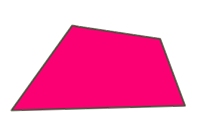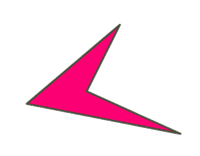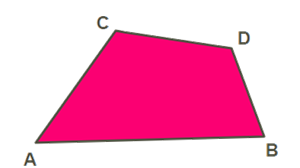UPSKILL MATH PLUS
Learn Mathematics through our AI based learning portal with the support of our Academic Experts!
Learn moreWe can define a quadrilateral in two ways:
- A quadrilateral is a closed-form that is obtained by joining four points which are non-collinear to any three points.

- A quadrilateral is a shape which is closed with four vertices and four sides.

We can say that there are four sides, four angles, and four vertices are in a quadrilateral.
Think of the following quadrilateral, for example:
A quadrilateral ABCD will have two diagonals: AD and BC.

Quadrilateral specific properties are:
- They have 4 sides.
- They have 4 vertices.
- They have 2 diagonals.
- The sum of all interior angles is 360°.
We will study in detail about the other properties of various quadrilaterals in the next theory.